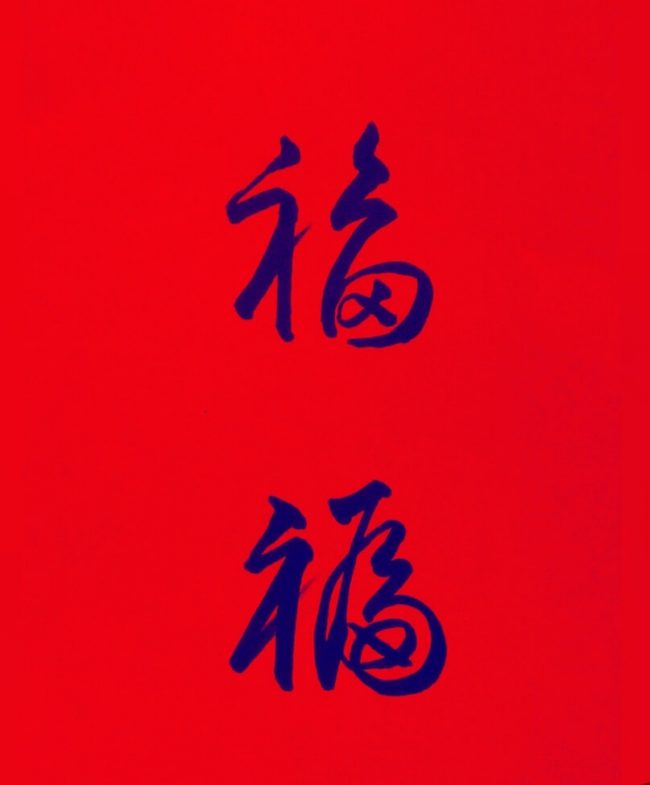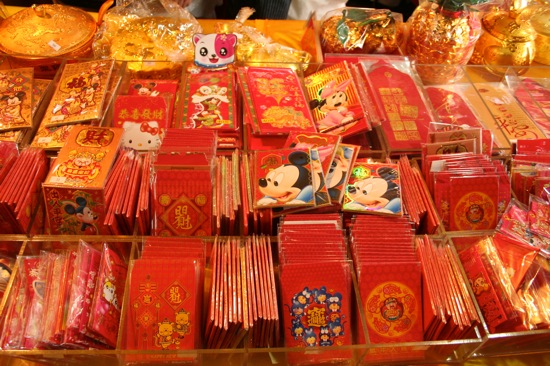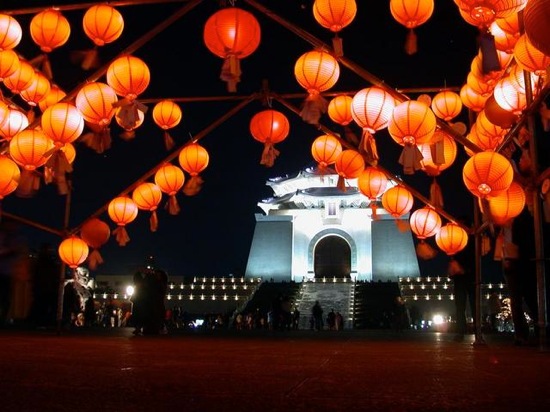
Over a billion people in China and millions around the world will celebrate the the Chinese New Year – the most important of Chinese holidays – around January 25, 2020, coinciding with the date of new moon in Asia. Countries in Southeast Asia celebrating it include China, Thailand, Indonesia, Malaysia, and the Philippines. It’s also celebrated in Chinatowns and Asian homes around the world. It’s considered a time to honor deities and ancestors and to be with family. The event always sparks a rush of travel that the New York Times has called, in the video above, the world’s largest annual human migration.
New moon falls on January 24, 2020, at 21:42 UTC; translate to your time.
Each year is associated with one of 12 animals in the Chinese zodiac. 2020 is the Year of the Rat.
Festivities in 2020 begin on January 24 and continue for 15 days, culminating with the Lantern Festival. China’s public holiday in 2020 will be January 24-30.
This year, with Chinese New Years approaching, health officials have expressed concerns about travel over this holiday, given the emergence of a little-understood coronavirus. There are fears the virus could mutate and spread further during this heavy travel season. As reported in the New York Times, the deputy head of China’s National Health Commission – Li Bin – said at a news conference in Beijing on January 22 that the number of people infected by the coronavirus:
… had risen to 440 by Tuesday night, up nearly tenfold from last week. Nine people have died.
The virus causes a pneumonia-like illness.
Read more from CNN (January 21): First US case of Wuhan coronavirus confirmed by CDC

Our friend Matthew Chin in Hong Kong created this graphic and wrote: “The two Chinese characters are the same. It means ‘blessing,’ a hope that other people will get good luck. It is commonly used during Chinese New Year. The red background is also a kind of ‘good’ as Chinese people use red to represent ‘good luck.'” Thank you, Matthew!
The calendar and Chinese New Year
In China, the familiar Gregorian calendar is used for day-to-day life. But Chinese calendar dates continue to be used to mark traditional holidays such as the new year and the fall moon festival. It’s also used astrologically to select favorable dates for weddings and other special events.
The Chinese calendar is a lunisolar calendar – in other words, a combination of solar and lunar calendars. It has a long history spanning several Chinese dynastic periods from as far back as the Shang Dynasty around the 14th century B.C. There are several different symbolic cycles within the calendar, used in Chinese astrology, that make it an intricate and complex measure of time.
A month in the Chinese calendar spans a single lunar cycle. The first day of the month begins during the new moon, when no sunlight falls on the lunar hemisphere that faces the Earth. A lunar cycle, on average, lasts 29.5 days, so a lunar month can last 29 or 30 days. Usually, there are 12 lunar months in a Chinese calendar year. In order to catch up with the solar calendar, which averages 365.25 days in a year, an extra month is added to the Chinese calendar every two or three years. As a result, Chinese New Year falls on different dates each year (in the Gregorian calendar) between January 21 and February 21.
Sign up for EarthSky’s free daily newsletter today!

Happy new Year of the Rat! Here are 15 messages to celebrate the Year of the Rat, from the Latin Times.
2020 is the Year of the Rat
Each year of the Chinese lunar calendar is represented by one of 12 animal symbols of the Chinese zodiac: Rat, Ox, Tiger, Rabbit, Dragon, Snake, Horse, Sheep (Goat), Monkey, Rooster, Dog, and Boar (Pig). For 2020, it’s the Rat’s turn. Travelchinaguide.com says of the year of the Rat:
Though people consider the rat not adorable, and it even makes its way into derogatory languages, it ranks first on the Chinese zodiac signs. It has characteristics of an animal with spirit, wit, alertness, delicacy, flexibility and vitality.

Chinese New Year red envelopes, used for giving money to children, at Dihua Market, Taipei, Taiwan. Image via BCody80 via Wikimedia Commons.
How to celebrate Chinese New Year
Chinese New Year celebrations traditionally last 15 days, from the first day (during a new moon) to the 15th day (next full moon). Each day holds a special significance that varies according to local traditions. But first, before the arrival of the new year, homes are thoroughly cleaned to sweep away ill fortune and to welcome good luck. On New Year’s Eve, there are family gatherings to celebrate and enjoy sumptuous traditional feasts, and to greet the new year with fireworks at midnight.
In the days that follow, festive dance parades are held featuring colorful dragons or lions, ceremonies are held to pay homage to deities and ancestors, children receive money in red envelopes, gifts are exchanged, extended family members visit each other, and there’s more traditional feasting.
The celebration culminates on the 15th day with the Lantern Festival. On this night of the full moon, families mingle in the streets carrying lighted lanterns, often creating a beautiful light display.

Lantern Festival night in front of the Chiang Kai-shek Memorial Hall in Taipei, Taiwan. Image via Philo Vivero via Wikimedia Commons.
Folklore and Chinese New Year
There are several variations on the mythology behind Chinese New Year celebrations. Most are based on an ugly, bloodthirsty monster named Nian that would emerge on the last night of each year to destroy villages and eat people. A wise elder advised villagers to scare the monster away with loud noises. That night, they set fire to bamboo, lit fireworks, and banged their drums. The monster, afraid of the loud noises and lights, ran away to hide in its cave. In another version of the myth, an old man persuaded Nian to turn its wrath on other monsters, not the villagers. Before he was seen riding away on Nian, the old man, actually a god, advised the people to hang red paper decorations in their homes and set off firecrackers on the last night of the year to keep Nian away.
On the first day of the new year, the villagers celebrated, greeting each other with the words Guo Nian, which mean “survive the Nian.” That tradition that has continued to this day, with Guo Nian now meaning “celebrate the new year.”

Traditional Chinese New Year Decoration. Image via Fanghong via Wikimedia Commons.
Bottom line: The Chinese New Year corresponds with the new moon, which falls on January 24, 2020 at 21:42 UTC; translate to your time. New moon is January 25 in Asia (January 24 in the west). Each Chinese lunar year is associated with one of 12 animals in the Chinese zodiac. For 2020, it’s the Year of the Rat.
from EarthSky https://ift.tt/30LoLos

Over a billion people in China and millions around the world will celebrate the the Chinese New Year – the most important of Chinese holidays – around January 25, 2020, coinciding with the date of new moon in Asia. Countries in Southeast Asia celebrating it include China, Thailand, Indonesia, Malaysia, and the Philippines. It’s also celebrated in Chinatowns and Asian homes around the world. It’s considered a time to honor deities and ancestors and to be with family. The event always sparks a rush of travel that the New York Times has called, in the video above, the world’s largest annual human migration.
New moon falls on January 24, 2020, at 21:42 UTC; translate to your time.
Each year is associated with one of 12 animals in the Chinese zodiac. 2020 is the Year of the Rat.
Festivities in 2020 begin on January 24 and continue for 15 days, culminating with the Lantern Festival. China’s public holiday in 2020 will be January 24-30.
This year, with Chinese New Years approaching, health officials have expressed concerns about travel over this holiday, given the emergence of a little-understood coronavirus. There are fears the virus could mutate and spread further during this heavy travel season. As reported in the New York Times, the deputy head of China’s National Health Commission – Li Bin – said at a news conference in Beijing on January 22 that the number of people infected by the coronavirus:
… had risen to 440 by Tuesday night, up nearly tenfold from last week. Nine people have died.
The virus causes a pneumonia-like illness.
Read more from CNN (January 21): First US case of Wuhan coronavirus confirmed by CDC

Our friend Matthew Chin in Hong Kong created this graphic and wrote: “The two Chinese characters are the same. It means ‘blessing,’ a hope that other people will get good luck. It is commonly used during Chinese New Year. The red background is also a kind of ‘good’ as Chinese people use red to represent ‘good luck.'” Thank you, Matthew!
The calendar and Chinese New Year
In China, the familiar Gregorian calendar is used for day-to-day life. But Chinese calendar dates continue to be used to mark traditional holidays such as the new year and the fall moon festival. It’s also used astrologically to select favorable dates for weddings and other special events.
The Chinese calendar is a lunisolar calendar – in other words, a combination of solar and lunar calendars. It has a long history spanning several Chinese dynastic periods from as far back as the Shang Dynasty around the 14th century B.C. There are several different symbolic cycles within the calendar, used in Chinese astrology, that make it an intricate and complex measure of time.
A month in the Chinese calendar spans a single lunar cycle. The first day of the month begins during the new moon, when no sunlight falls on the lunar hemisphere that faces the Earth. A lunar cycle, on average, lasts 29.5 days, so a lunar month can last 29 or 30 days. Usually, there are 12 lunar months in a Chinese calendar year. In order to catch up with the solar calendar, which averages 365.25 days in a year, an extra month is added to the Chinese calendar every two or three years. As a result, Chinese New Year falls on different dates each year (in the Gregorian calendar) between January 21 and February 21.
Sign up for EarthSky’s free daily newsletter today!

Happy new Year of the Rat! Here are 15 messages to celebrate the Year of the Rat, from the Latin Times.
2020 is the Year of the Rat
Each year of the Chinese lunar calendar is represented by one of 12 animal symbols of the Chinese zodiac: Rat, Ox, Tiger, Rabbit, Dragon, Snake, Horse, Sheep (Goat), Monkey, Rooster, Dog, and Boar (Pig). For 2020, it’s the Rat’s turn. Travelchinaguide.com says of the year of the Rat:
Though people consider the rat not adorable, and it even makes its way into derogatory languages, it ranks first on the Chinese zodiac signs. It has characteristics of an animal with spirit, wit, alertness, delicacy, flexibility and vitality.

Chinese New Year red envelopes, used for giving money to children, at Dihua Market, Taipei, Taiwan. Image via BCody80 via Wikimedia Commons.
How to celebrate Chinese New Year
Chinese New Year celebrations traditionally last 15 days, from the first day (during a new moon) to the 15th day (next full moon). Each day holds a special significance that varies according to local traditions. But first, before the arrival of the new year, homes are thoroughly cleaned to sweep away ill fortune and to welcome good luck. On New Year’s Eve, there are family gatherings to celebrate and enjoy sumptuous traditional feasts, and to greet the new year with fireworks at midnight.
In the days that follow, festive dance parades are held featuring colorful dragons or lions, ceremonies are held to pay homage to deities and ancestors, children receive money in red envelopes, gifts are exchanged, extended family members visit each other, and there’s more traditional feasting.
The celebration culminates on the 15th day with the Lantern Festival. On this night of the full moon, families mingle in the streets carrying lighted lanterns, often creating a beautiful light display.

Lantern Festival night in front of the Chiang Kai-shek Memorial Hall in Taipei, Taiwan. Image via Philo Vivero via Wikimedia Commons.
Folklore and Chinese New Year
There are several variations on the mythology behind Chinese New Year celebrations. Most are based on an ugly, bloodthirsty monster named Nian that would emerge on the last night of each year to destroy villages and eat people. A wise elder advised villagers to scare the monster away with loud noises. That night, they set fire to bamboo, lit fireworks, and banged their drums. The monster, afraid of the loud noises and lights, ran away to hide in its cave. In another version of the myth, an old man persuaded Nian to turn its wrath on other monsters, not the villagers. Before he was seen riding away on Nian, the old man, actually a god, advised the people to hang red paper decorations in their homes and set off firecrackers on the last night of the year to keep Nian away.
On the first day of the new year, the villagers celebrated, greeting each other with the words Guo Nian, which mean “survive the Nian.” That tradition that has continued to this day, with Guo Nian now meaning “celebrate the new year.”

Traditional Chinese New Year Decoration. Image via Fanghong via Wikimedia Commons.
Bottom line: The Chinese New Year corresponds with the new moon, which falls on January 24, 2020 at 21:42 UTC; translate to your time. New moon is January 25 in Asia (January 24 in the west). Each Chinese lunar year is associated with one of 12 animals in the Chinese zodiac. For 2020, it’s the Year of the Rat.
from EarthSky https://ift.tt/30LoLos

Aucun commentaire:
Enregistrer un commentaire